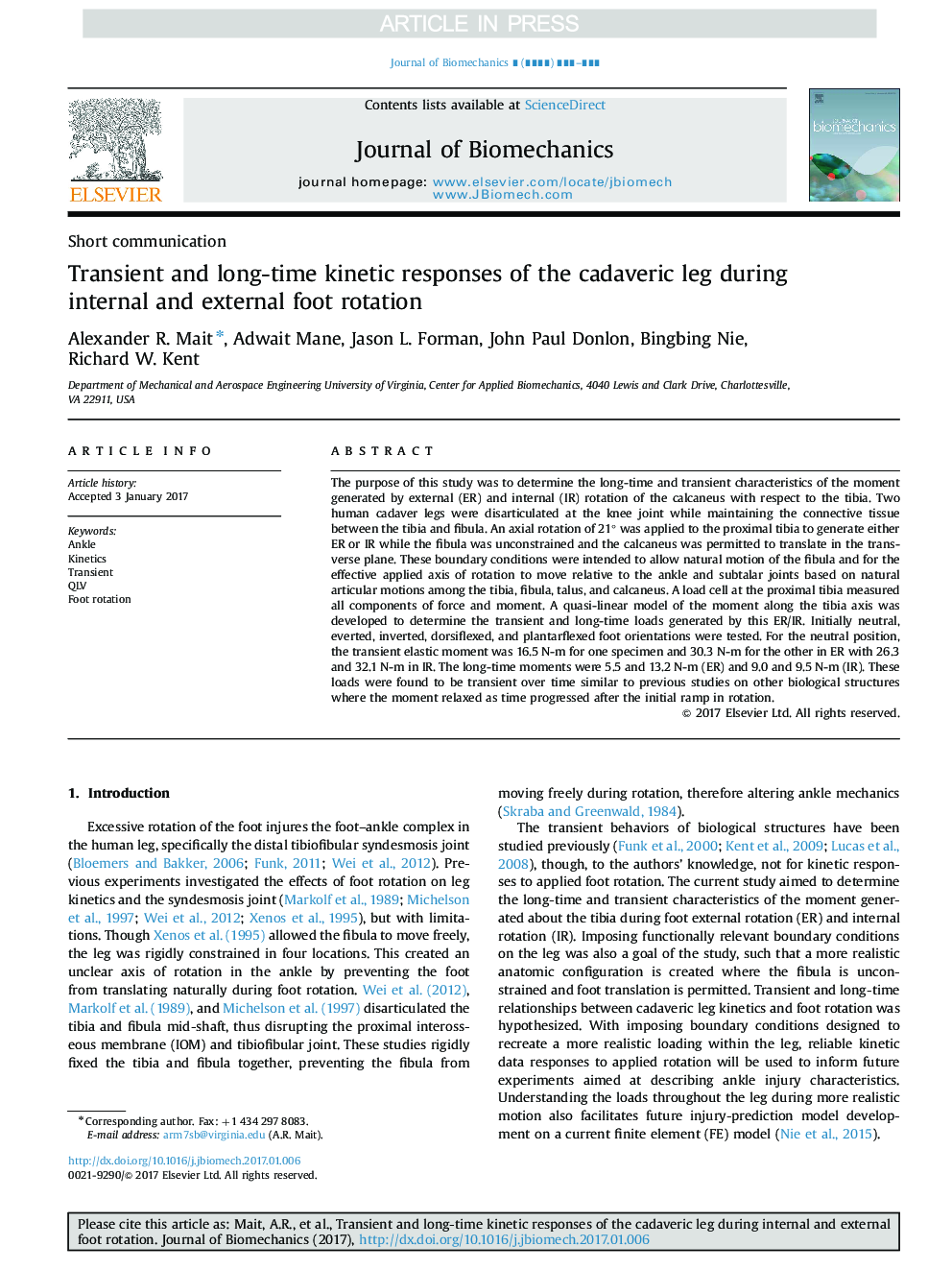| Article ID | Journal | Published Year | Pages | File Type |
|---|---|---|---|---|
| 5032212 | Journal of Biomechanics | 2017 | 5 Pages |
Abstract
The purpose of this study was to determine the long-time and transient characteristics of the moment generated by external (ER) and internal (IR) rotation of the calcaneus with respect to the tibia. Two human cadaver legs were disarticulated at the knee joint while maintaining the connective tissue between the tibia and fibula. An axial rotation of 21° was applied to the proximal tibia to generate either ER or IR while the fibula was unconstrained and the calcaneus was permitted to translate in the transverse plane. These boundary conditions were intended to allow natural motion of the fibula and for the effective applied axis of rotation to move relative to the ankle and subtalar joints based on natural articular motions among the tibia, fibula, talus, and calcaneus. A load cell at the proximal tibia measured all components of force and moment. A quasi-linear model of the moment along the tibia axis was developed to determine the transient and long-time loads generated by this ER/IR. Initially neutral, everted, inverted, dorsiflexed, and plantarflexed foot orientations were tested. For the neutral position, the transient elastic moment was 16.5 N-m for one specimen and 30.3 N-m for the other in ER with 26.3 and 32.1 N-m in IR. The long-time moments were 5.5 and 13.2 N-m (ER) and 9.0 and 9.5 N-m (IR). These loads were found to be transient over time similar to previous studies on other biological structures where the moment relaxed as time progressed after the initial ramp in rotation.
Related Topics
Physical Sciences and Engineering
Engineering
Biomedical Engineering
Authors
Alexander R. Mait, Adwait Mane, Jason L. Forman, John Paul Donlon, Bingbing Nie, Richard W. Kent,
